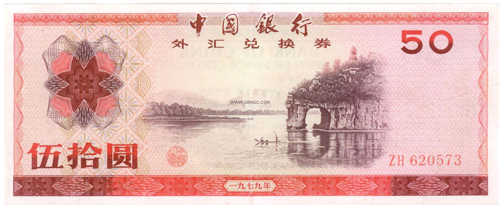Guangxi cuisine is an anomaly amongst Chinese cuisines in that it is known for borrowing elements of other styles of cuisine rather than having its own distinct flavour. It is sour, but not as sour as Hunan cuisine. It is light, but not as light as Cantonese cuisine. It is spicy, but not as spicy as Sichuan cuisine. This diversity is due to the fact that Guangxi has been heavily influenced by Cantonese culture in neighbouring Guangdong province and by the numerous resident ethnic minorities, such as the Zhuang, Yao, Dong, Miao and Bai people, to name but a few.
However, unlike many other southern Chinese styles, Guangxi is distinguished by its frequent use of noodles instead of rice. Though rice is served with every meal, as is the tradition in the south of China, many of the signature dishes in Guangxi are made using rice noodles. Guangxi signature dishes have also been heavily influenced by the Li River, which is the source of many key ingredients. From hearty river snails to fat, fleshy river fish, when you’re in Guangxi a taste of the Li River is always on the menu.
Stuffed River Snails (阳朔酿田螺)
These are not your average, garden-variety snails. Locals say that snails found in the Li River are so huge that they could be mistaken for ping pong balls. Though this snail dish may seem a little off putting to Western sensibilities, it is a true labour of love that tastes far better than you’d imagine. The snails are first disgorged in clean water in order to remove any of the grit from within the shell. The snails are then quickly steamed in their shells before the snail meat is removed and finely chopped along with fresh mint, garlic, chillies and a small helping of pork. This aromatic mixture is delicately spooned back into the snail shells and cooked to perfection. This dish is full of punchy, refreshing flavours, from the strong mint to the fiery chillies right through to the rich, meaty flavour of the snails. Don’t let the content put you off, stuffed river snails are a must-try in Guangxi!
Beer Fish (啤酒鱼)
This signature dish comes directly from the county town of Yangshuo and is arguably the most famous dish in that region. The local flavours in this dish make it impossible to replicate anywhere else, and this adds to its rustic charm. First, a catfish weighing between 1 to 1.5 kilograms is sourced from the Li River. Many restaurants in Yangshuo will keep a hefty number of these catfish in large freshwater tanks so that the freshness of the fish is retained and diners can choose which fish they want. The fish is then gutted and cut in half but the scales are left on. It is fried in camellia oil until the scales are a crispy golden brown and the tender, white flesh is cooked through.
The cooked fish is then boiled in a mixture of water, local Liquan beer, tomatoes, chillies, ginger, and other vegetables. The locals maintain that the fish must be cooked using water from the Li River and Liquan brand beer, or else you risk losing the dish’s distinctive flavour. When this soup has reduced, the dish is ready to serve. In spite of the copious amounts of beer and chillies in the soup, the dish has a noticeably sour taste. The heat from the chillies is just enough to give the soup some punch, but it is the soup’s wonderful tanginess that complements the crispy, tender fish perfectly.
Luosifen (螺蛳粉)
Luosifen is a popular dish from Liuzhou that is renowned for its unusual, spicy flavour. The broth used in luosifen has been painstakingly made over a period of several hours. This broth is made by stewing river snails and pork bones with black cardamom, fennel seed, dried tangerine peel, cassia bark, cloves, white pepper, bay leaf, liquorice root, sand ginger, and star anise. This effusion of ingredients creates an aromatic mix that will both tantalise and confuse the senses. When it comes to luosifen, you’re never quite sure exactly what it tastes of but you know it tastes great.
The soup is not actually served with any of the snail meat, but instead comes with a hefty portion of pickled vegetables, tofu skin, fresh green vegetables, peanuts, and chillies. The broth is then poured over thick, hearty rice noodles and served with a choice of garnishes, including crushed chillies, garlic, soy sauce, and coriander. This dish was originally only served in small, “hole-in-the-wall” type restaurants but its growing popularity means it can now be found in many luxury restaurants across Guangxi and even in some other big cities, such as Beijing and Shanghai. If you fancy a dish that will rouse all of your senses, luosifen is the one for you!
Lipu Taro Looped Meat (荔浦芋头扣肉)
This dish is traditionally served as part of a banquet or on festival occasions, although now it is widely available in restaurants throughout Guangxi. Like Beer Fish, this dish has a distinct local flavour thanks to its locally sourced ingredients. Taro is a type of yam popular in China and known for its characteristically purple flesh. The taro in this dish must be sourced from Lipu County, which is about 104 kilometres south of Guilin, as it is supposedly the best in all of Guangxi. This taro is combined with pork belly, pepper, garlic, fermented bean curd, wine, honey and several other seasonings to form a dish that is rich and full of flavour.
The taro and the pork belly are first deep-fried separately in vegetable oil until they are both golden brown and the succulent fat of the pork is tantalisingly crispy. The taro and pork belly are then combined, along with the other ingredients, and cooked in a large pot or pressure cooker until the sauce is thick and the aroma is irresistible. The glazed slices of delicious pork belly and the soft, spongy flesh of the taro combine perfectly to create a truly delicious, filling dish.
Taste some authentic Guangxi Cuisine on our travel: Explore the culture of Ethnic minorities in Southeast Guizhou
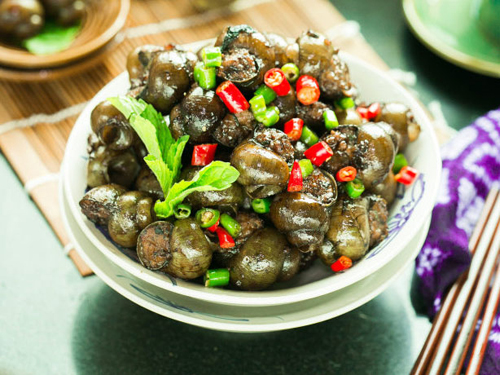
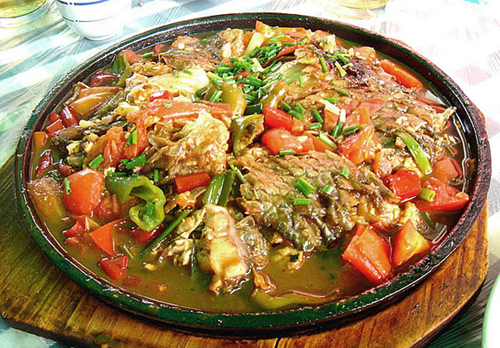
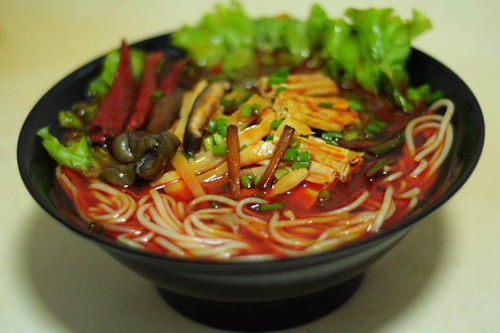
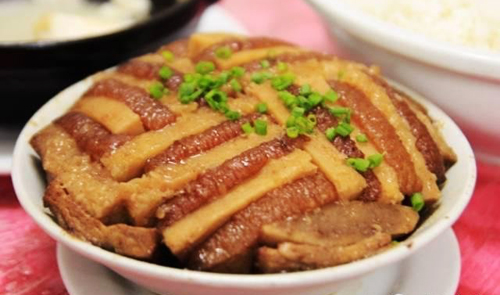
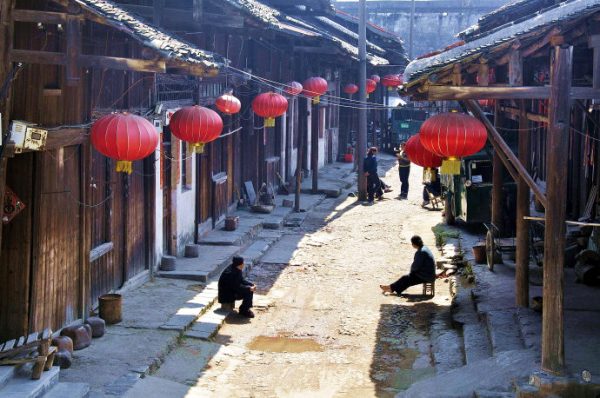
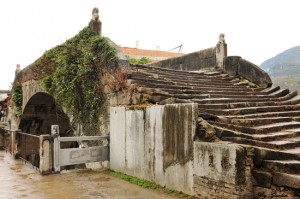
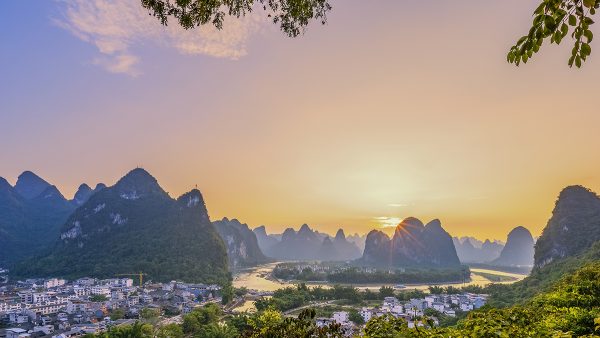
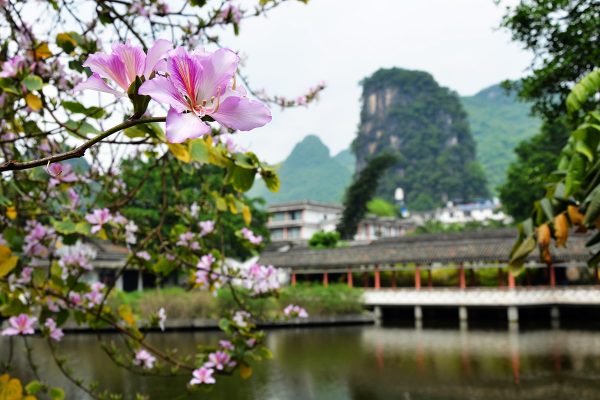
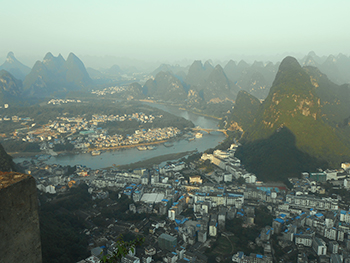 Thanks to the Western expats now living in Yangshuo, the town boasts a variety of Western-style restaurants, cafés and bars that you won’t find in other Chinese towns. The food on offer in most of these restaurants is of a good standard and can provide a much needed rest from Chinese food if you’ve been travelling around the country for too long. Although most places close around 2am, Yangshuo boasts some of the most exciting nightlife in Guangxi. Many hostels will have their own bars and, coupled with the established bars and nightclubs in the town, this makes for a lively and unique atmosphere in the evenings. These hostel bars provide a wonderful opportunity to meet other travellers and backpackers on your journey.
Thanks to the Western expats now living in Yangshuo, the town boasts a variety of Western-style restaurants, cafés and bars that you won’t find in other Chinese towns. The food on offer in most of these restaurants is of a good standard and can provide a much needed rest from Chinese food if you’ve been travelling around the country for too long. Although most places close around 2am, Yangshuo boasts some of the most exciting nightlife in Guangxi. Many hostels will have their own bars and, coupled with the established bars and nightclubs in the town, this makes for a lively and unique atmosphere in the evenings. These hostel bars provide a wonderful opportunity to meet other travellers and backpackers on your journey.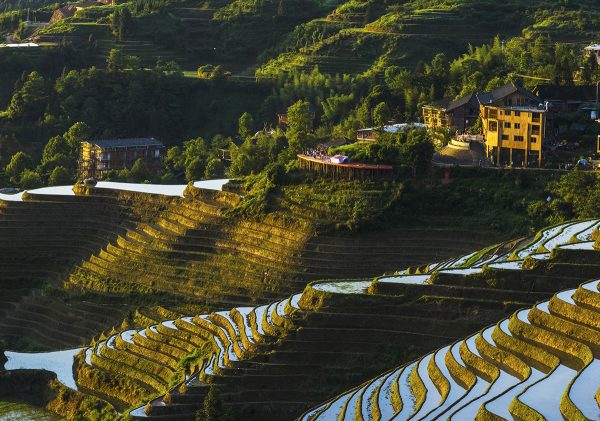 Although rice terraces wind their way around mountains throughout China, the Longji Rice Terraces are considered to be the most magnificent of them all. They are located in Longsheng County, about 100 kilometres (62 miles) outside of Guilin, and are sometimes referred to as the Longsheng Rice Terraces. The word “longji” means “dragon’s backbone” and these rice terraces earned their unusual name because the terraced fields climbing up the mountain look like dragons’ scales whilst the summit of the mountain range resembles a dragon’s backbone. This gives you an idea as to the sheer scale of these rice terraces.
Although rice terraces wind their way around mountains throughout China, the Longji Rice Terraces are considered to be the most magnificent of them all. They are located in Longsheng County, about 100 kilometres (62 miles) outside of Guilin, and are sometimes referred to as the Longsheng Rice Terraces. The word “longji” means “dragon’s backbone” and these rice terraces earned their unusual name because the terraced fields climbing up the mountain look like dragons’ scales whilst the summit of the mountain range resembles a dragon’s backbone. This gives you an idea as to the sheer scale of these rice terraces.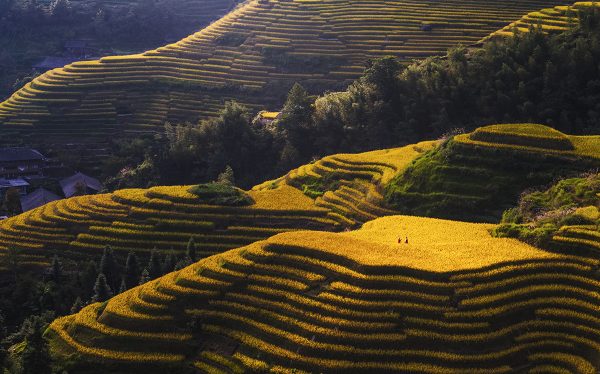
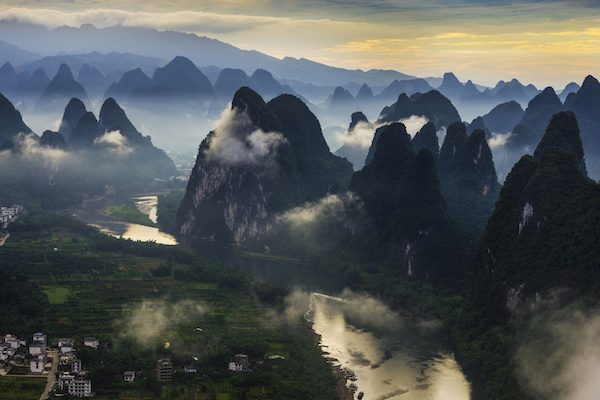
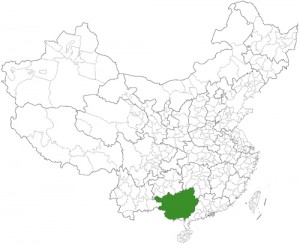
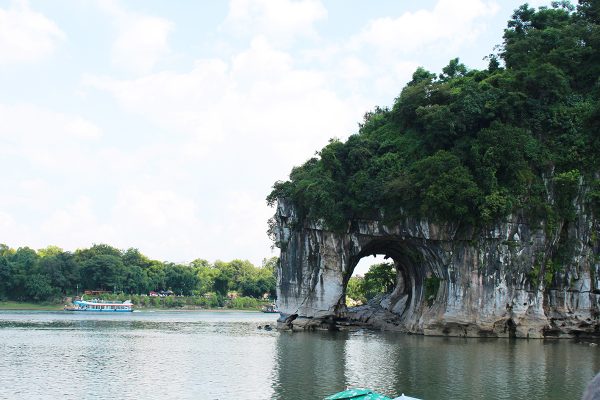 If you visit the city of Guilin, you will undoubtedly come across elephants. Whether they are in a business’ logo, a restaurant’s name, or on the front of a travel brochure, elephants have become a symbol of Guilin, and this is all thanks to Elephant Trunk Hill. Locals in Guilin say that if you have been to Elephant Trunk Hill then you have been to Guilin, which shows just how important this natural wonder is to the city and its people. Elephant Trunk Hill (Xiangbi Hill) is a Karst formation that has naturally formed on the western bank of the Li River just outside of Guilin city. It is so named because it looks like a thirsty elephant dipping its trunk into the river to drink. It rises over 55 metres over the waters of the Li River and measures 108 metres in length and 100 metres in width. In the past, it has been referred to by many names, such as “Li Hill”, “Yi Hill”, and “Chenshui Hill”, but it is now widely known as Elephant Trunk Hill.
If you visit the city of Guilin, you will undoubtedly come across elephants. Whether they are in a business’ logo, a restaurant’s name, or on the front of a travel brochure, elephants have become a symbol of Guilin, and this is all thanks to Elephant Trunk Hill. Locals in Guilin say that if you have been to Elephant Trunk Hill then you have been to Guilin, which shows just how important this natural wonder is to the city and its people. Elephant Trunk Hill (Xiangbi Hill) is a Karst formation that has naturally formed on the western bank of the Li River just outside of Guilin city. It is so named because it looks like a thirsty elephant dipping its trunk into the river to drink. It rises over 55 metres over the waters of the Li River and measures 108 metres in length and 100 metres in width. In the past, it has been referred to by many names, such as “Li Hill”, “Yi Hill”, and “Chenshui Hill”, but it is now widely known as Elephant Trunk Hill.